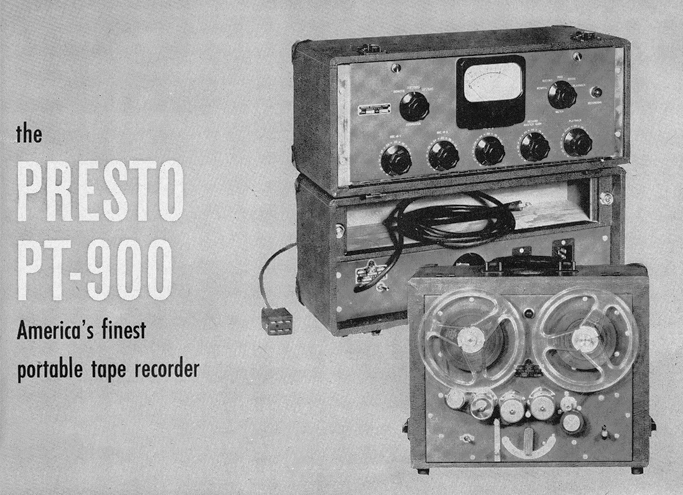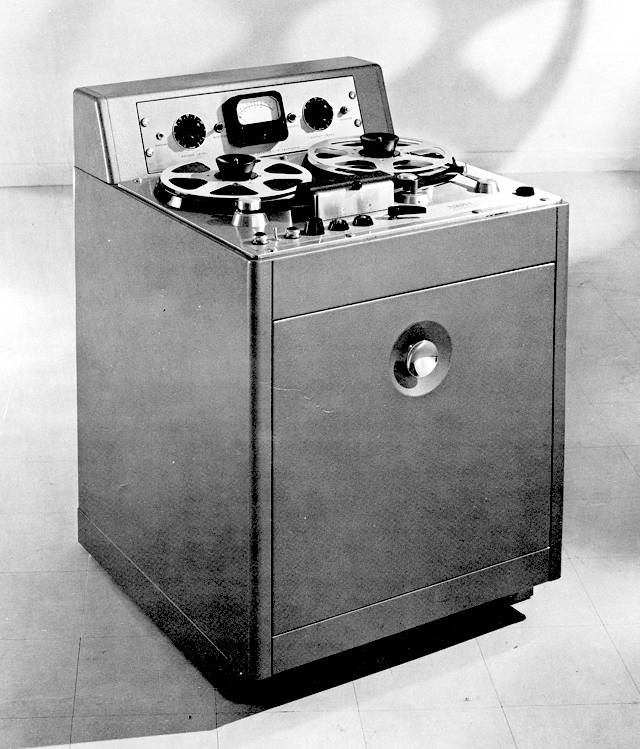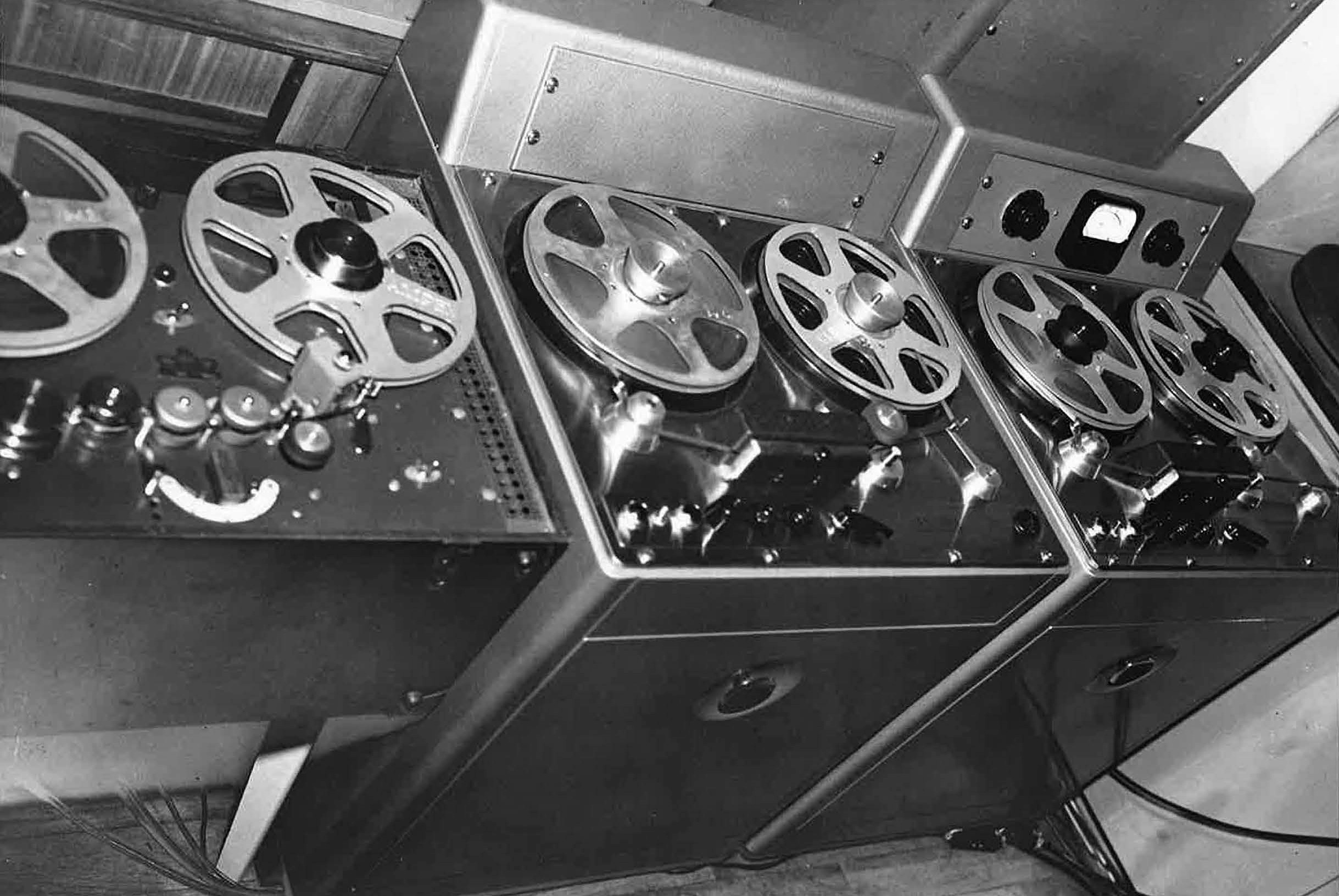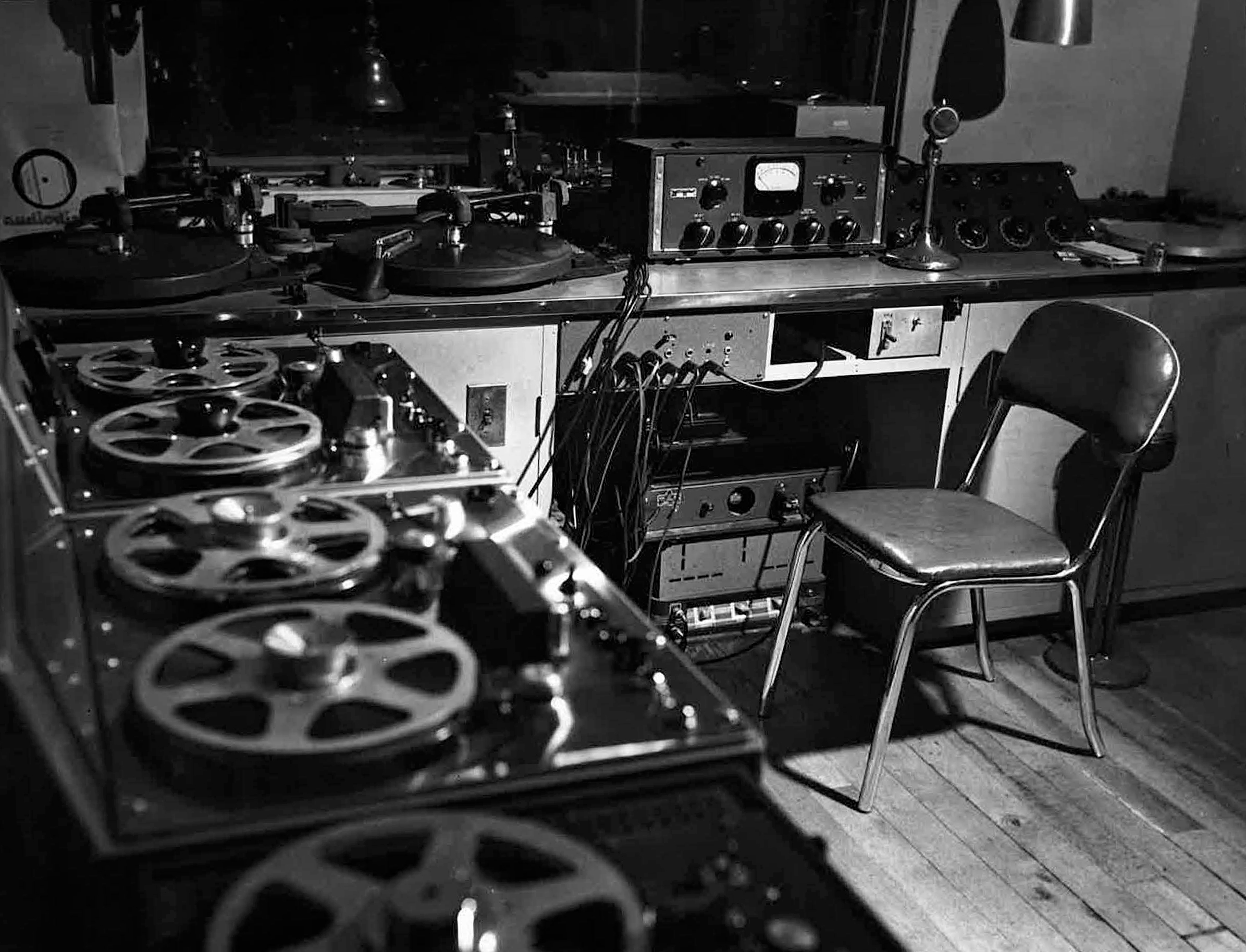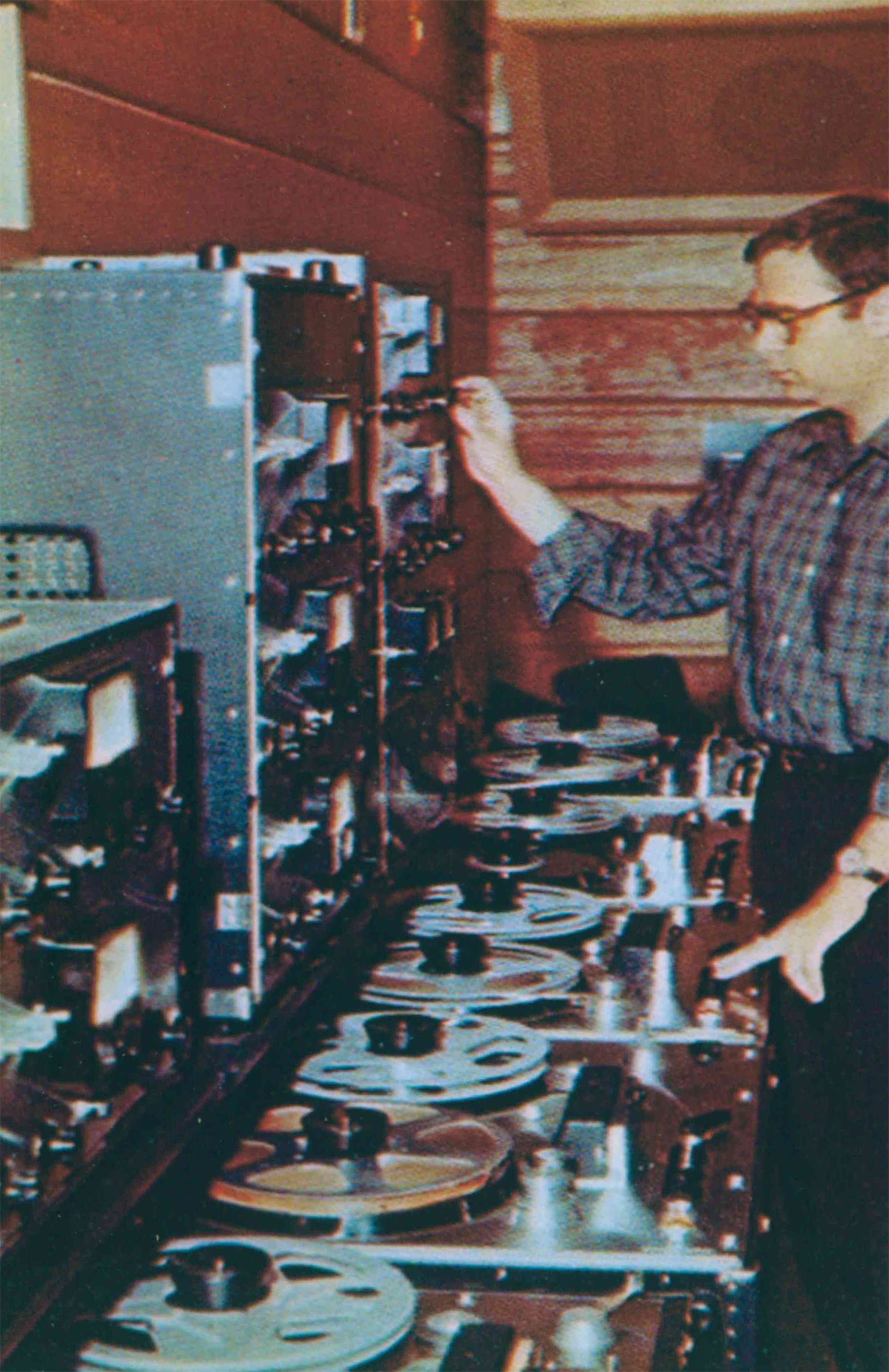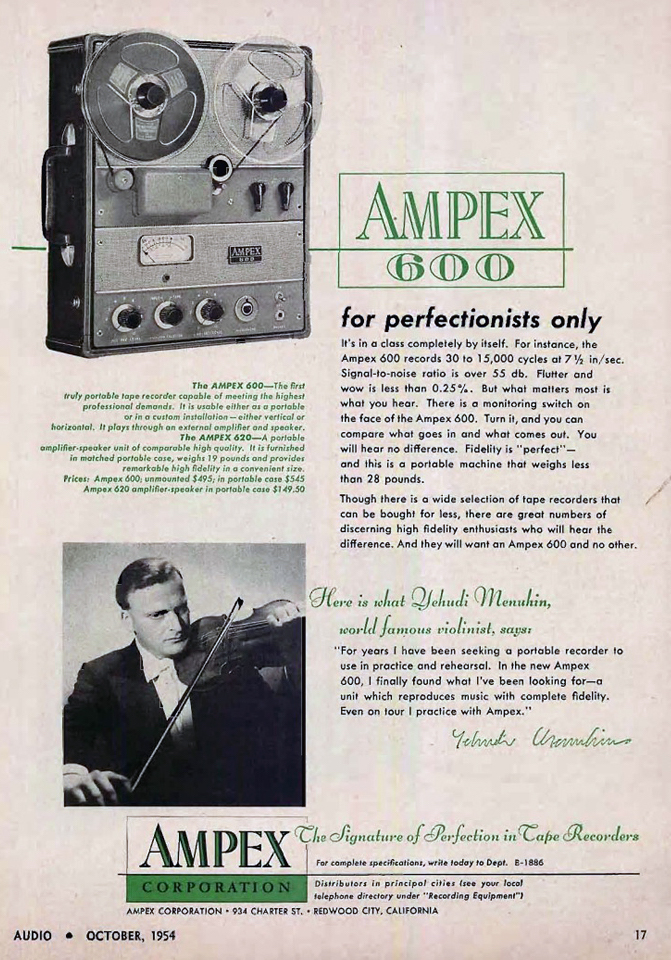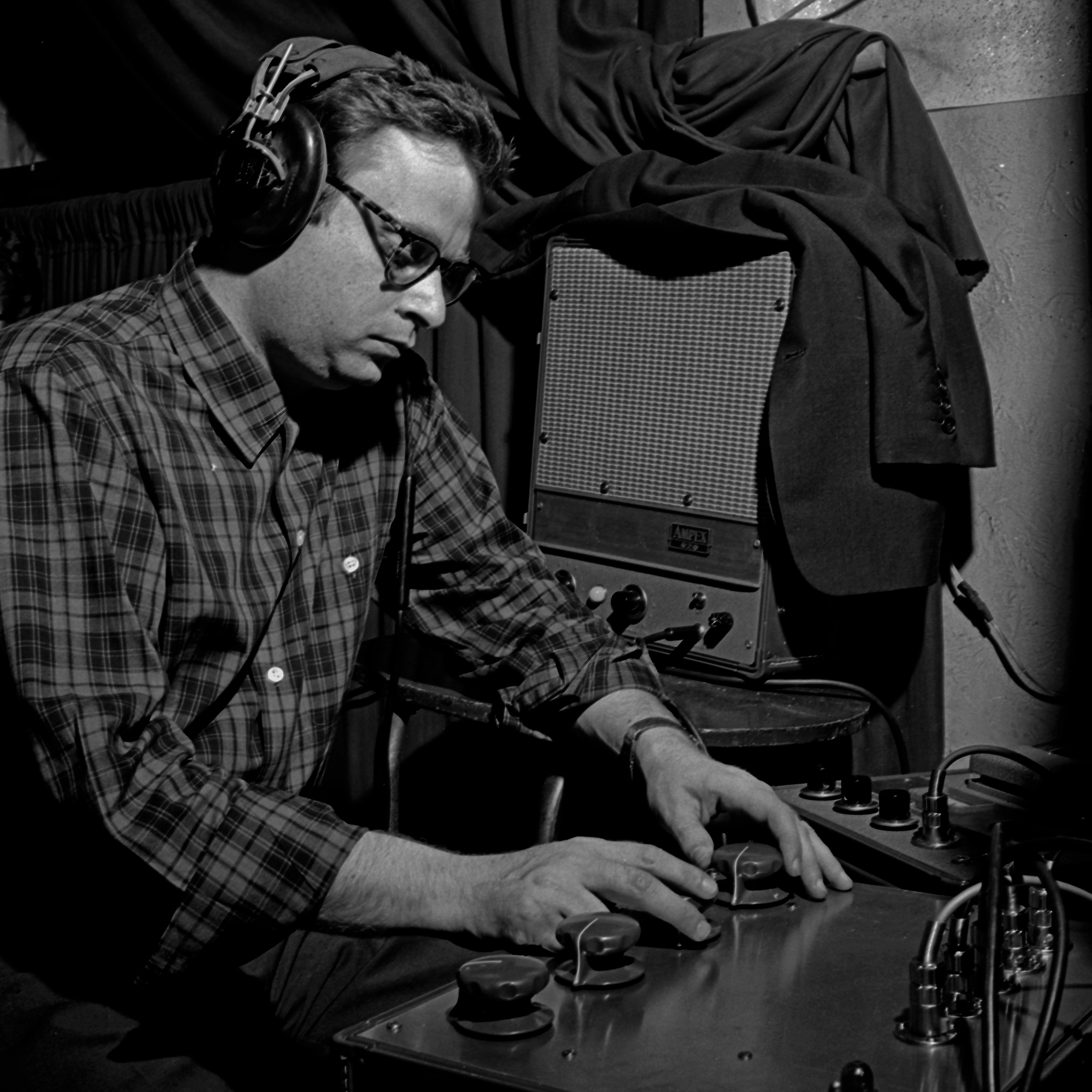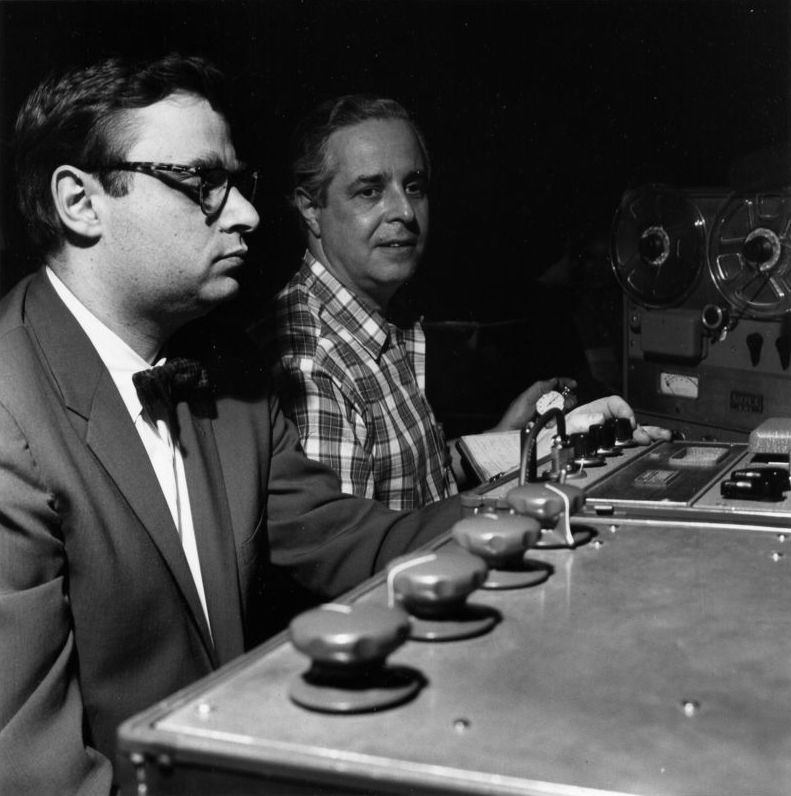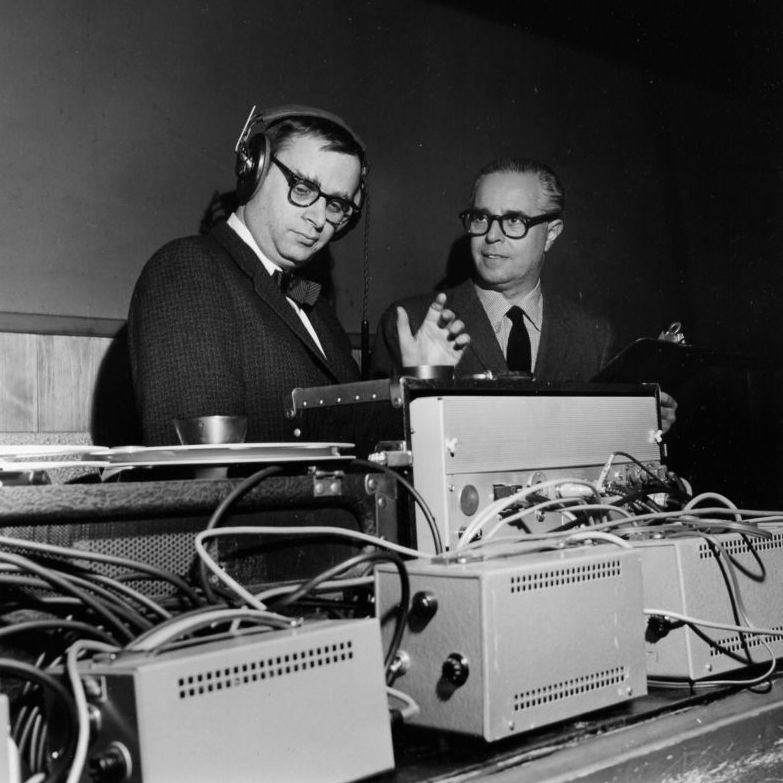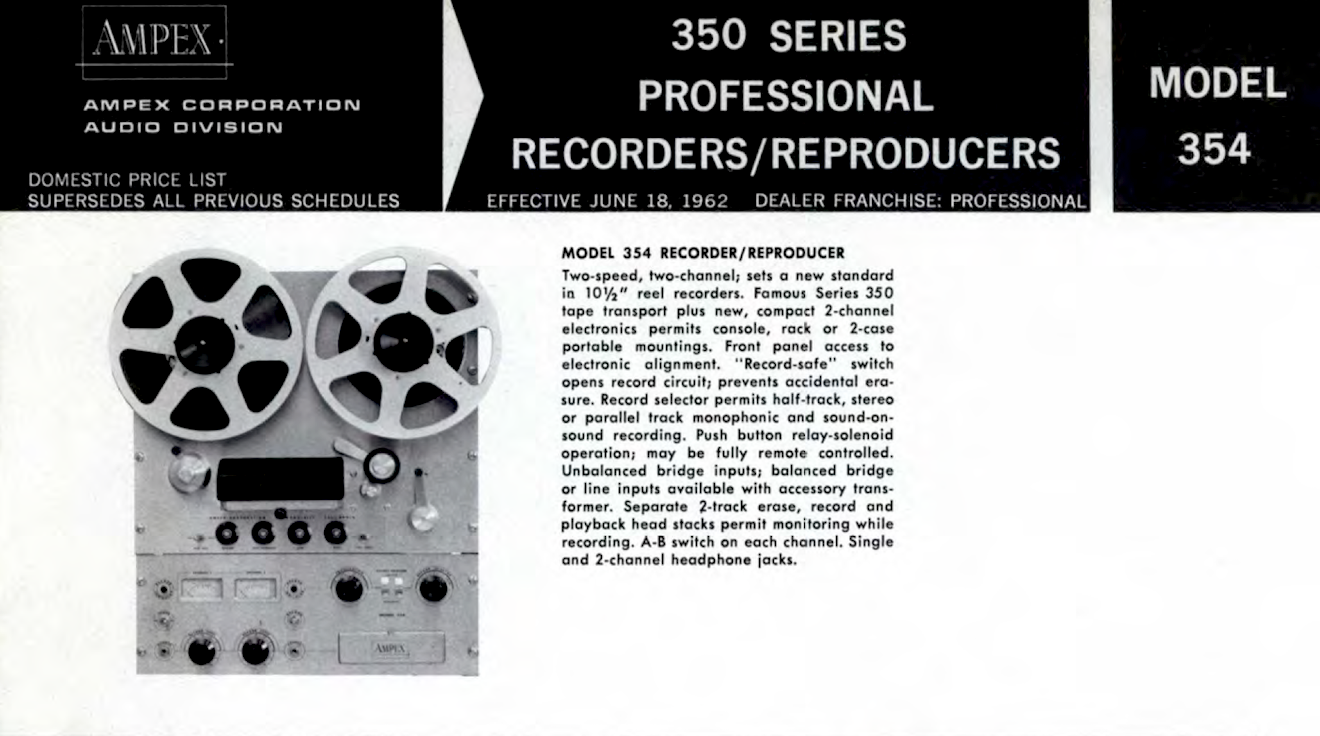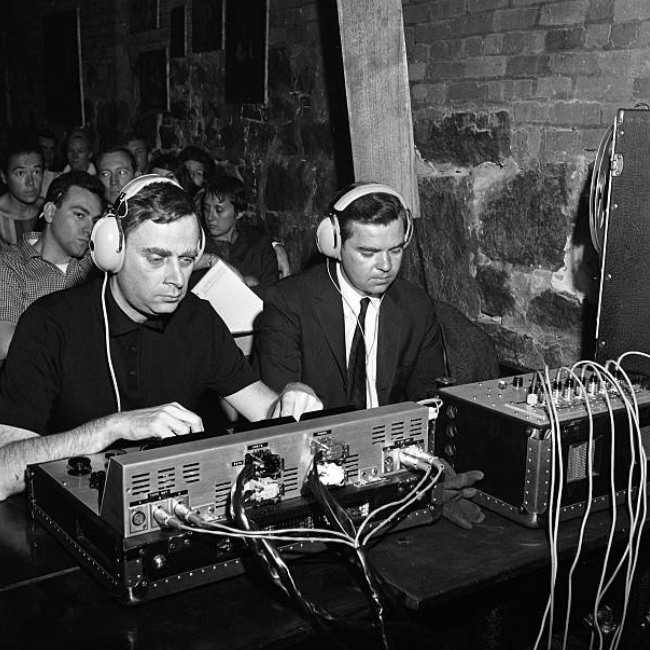| < Back | Disk Recorders | Microphones | Next > |
| Disk Recorders < Back |
Microphones Next > |
Studio
The widespread availability of tape recording was a marked revolution in the music industry, and it played a key role in establishing the high fidelity era of analog recording. But that revolution didn’t happen overnight.
Sometime around 1950 Rudy would have acquired his first tape recorder, the portable Presto PT-900. The transport came with a three-channel mixer, but Rudy said it “didn’t operate well”.
Van Gelder then acquired his first Ampex 300-C tape recorder in June 1951. Originally introduced in 1949, Van Gelder said that it was “impossible” to record a full reel correctly at first, and that the preamps were unstable because of the power supply. Once this had been resolved, Ampex provided Rudy with a free head assembly upgrade since the original tape gap width was, in Van Gelder’s words, “experimental”. By the end of 1953, Van Gelder had acquired two 300-C recorders. Then around 1954, Rein Narma helped Van Gelder optimize the performance of his Ampexes, probably similar to the way in which he modified the machines at Gotham Audio where Narma worked.
In 1956, Rudy was experimenting with two-track recording alongside engineer Tom Dowd. For several Atlantic sessions at the Hackensack house, Dowd brought his two-track tape recorder with him. Dowd did the stereo recording while Van Gelder did the mono. Then in March 1957, Van Gelder made his first professional stereo recording. This Art Blakey Blue Note session took place in the ballroom of Manhattan Towers, a hotel on Broadway between 76th and 77th Streets in Manhattan. Van Gelder used his newly-acquired Ampex 350-2P portable two-track for the occasion.
Around the time Van Gelder moved to Englewood Cliffs in the summer of 1959, he acquired two Ampex 300-2C two-track and one 300-3C three-track console tape recorders. The three-track was in all likelihood used to master for companies like Vox, and as far as we know he never recorded to three-track.
By this time it is believed that Van Gelder was rarely if ever recording to full-track, though he still had his two 300-C machines set up in the Englewood Cliffs control room for remastering purposes. In an effort to minimize the amount of tape editing he had to do, he had recently implemented his “50-50” system for making both mono and stereo masters from a single two-track master tape without any generation loss. Beginning in 1958, he would employ this system through the remainder of the mono era.
Remote
For remote gigging, Van Gelder replaced the Presto PT-900 with his first Ampex 600 (full-track) around 1955.
He was operating two units by the end of 1957, evidenced by this November 3, 1957 photo from the recording date for Sonny Rollins’ A Night at the Village Vanguard.
The Ampex 600 only used 7-inch reels and its maximum tape speed was only 7.5 IPS (inches per second), but according to mastering engineer Steve Hoffman, all the original live Blue Note master tapes from this time period are on 10.5-inch reels recorded at 15 IPS. Hoffman also says it’s clear that all of these tapes were made by Van Gelder. So for live albums he must have been in the habit of transferring the smaller reels to 10.5-inch reels for mastering. (On a side note, Rudy never made his tapes with test tones throughout the ‘50s and ‘60s — he didn’t need to since he was doing the mastering himself.)
Around 1959, Van Gelder began using an Ampex 351-2U two-track for live gigs.
Then around 1963, Van Gelder switched to the Ampex 354-R two-track for live gigs.
Tape
Mastering engineer Kevin Gray has explained that Van Gelder always used Scotch 111 tape and then Scotch 201 after it was introduced in 1964.
| < Back | Disk Recorders | Microphones | Next > |
| Disk Recorders < Back |
Microphones Next > |
